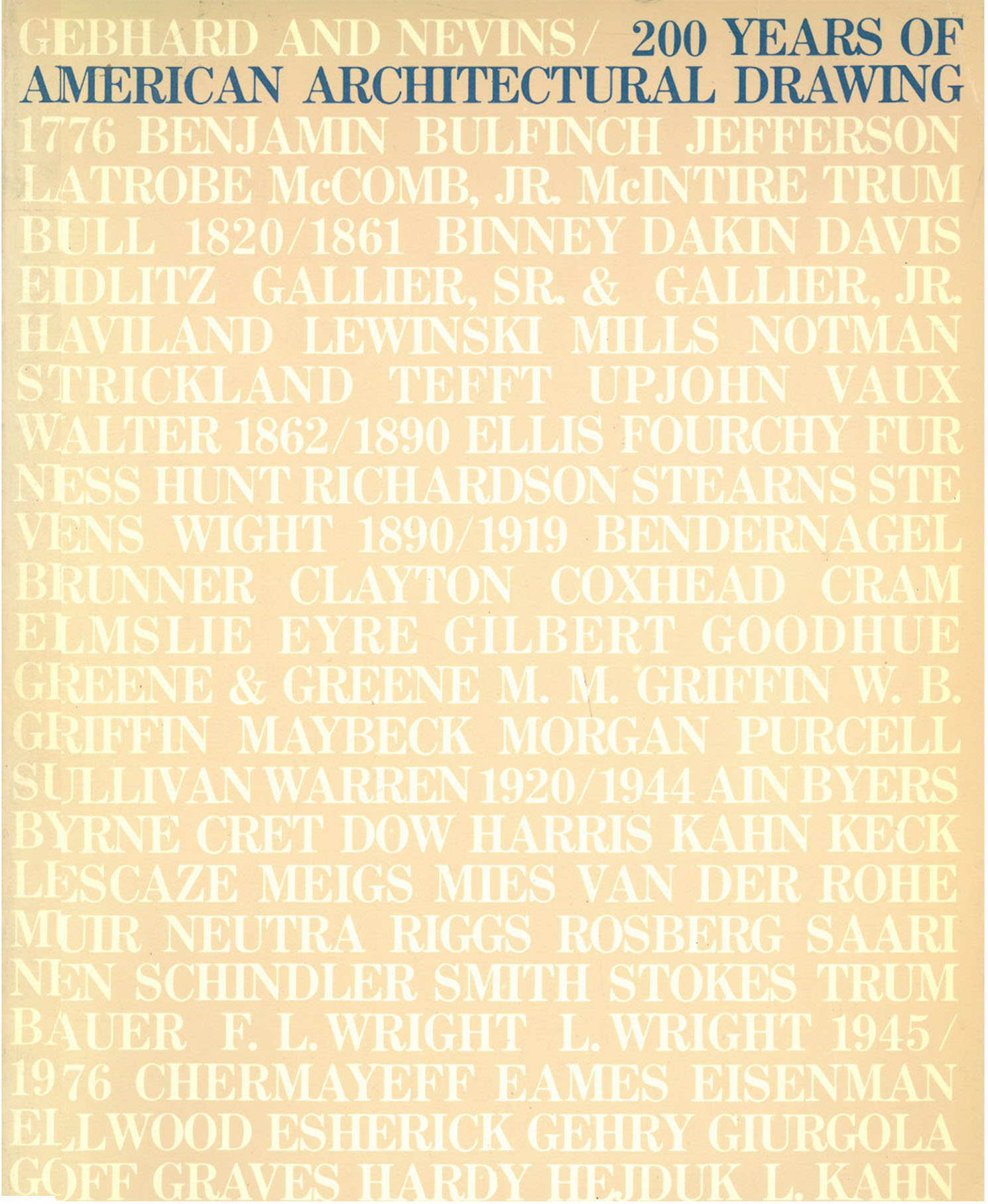
November 17, 2014

Frank House (House VI) | Cornwall, Connecticut | 1973 | Tape, ink, and zipatone, 20×24″ | Courtesy of Peter Eisenman Architects
In Peter Eisenman’s professional activity, architectural criticism and theory have been integral with the production of built form. In the 1960s he developed a theory of architecture antithetical to most modernist theory. Initially published in a cohesive manner in Five Architects of 1972, Eisenman’s writing and polemical buildings have placed him in the forefront of the architectural dialogue of the last decade.
Eisenman has developed an architectural theory that divorces the building and its conceptualization from traditional cultural and pragmatic concerns. He is interested in exploring the inherent nature of architecture divorced from the specificity of program. The nature of plane, line or column, and volume is of primary concern, as is the relationship among these elements. This relationship is organized by a rule system, which Eisenman, to borrow an analog from linguistic theory, has called “deep structure.” Eisenman, profoundly influenced by linguistic theory, has vigorously maintained that architecture is a language whose surface variations, as those in language, are dominated by an underlying structure.
Eisenman’s explorations are dependent on 20th-century technology, in which non-load-bearing walls free the architect from formal limitations imposed by physical requirements. He has explained this and his consistent use of a structural grid: “…modern technology provided architecture with a new means for conceiving space…in a sense, space was no longer necessarily limited or defined by structure, and this was especially true with respect to the use of the load-bearing wall; the column became both the primary structural and the primary formal element. With a diminishing of these structural constants, it was possible to examine the column and the wall in a capacity other than in the solution of pragmatic problems…Le Corbusier’s Maison Domino was paradigmatic in this respect.”
To concentrate attention on his formal investigations, Eisenman has adapted a revision of the International Style that he calls “cardboard architecture.” The modernist work of the 1920s and 1930s of Le Corbusier (1887–1965) and Giuseppe Terragni (1904–1942) have been inspirational in the development of Eisenman’s formal vocabulary. His buildings, white or white and gray with the addition of a limited use of primary colors more recently, have the feeling of cardboard models. This results not only from their color but more importantly from the visual suppression of all structural detailing, the uniform texture of the walls, and shallow interior space. Eisenman has written that “cardboard is connotative of less mass, less texture, less color, and ultimately less concern for these. It is closest to the abstract idea of plan.” It is Eisenman’s intention that the “deep structure,” although not explicitly apparent, would be apprehended by the viewer, thereby intensifying the viewer’s understanding of architectural space.
…
Peter Eisenman’s houses are numbered consecutively to eliminate cultural associations and stress the abstract concerns of the architect. The Frank House, built for an architectural historian and her husband in Cornwall, Connecticut, is House VI and was completed in 1976. Of essential importance to Eisenman is the process by which the final form of the house is arrived at. The building, or final design, is but a by-product of a conceptualization that is developed in conjunction with writing and large number of complicated drawings. His means of representation, other than the small study sketch, is the axonometric perspective. The four axonometrics illustrated here are part of a 15-unit sequence that explicates the generative ideas of the house. The form of the house is organized around two grids of unequal size formulated by a module. They are locked together by a double cruciform defined by cross planes. The arms of the cross are shifted from their normal configuration, resulting in the phenomenon of “sheer.” Terms such as “sheer” or “compression” and “tension,” also important in Eisenman’s work, are used by him as abstract conceptualizations of statics. An overriding concern that informs the structure is that of dialectic. The dialectic is established between such notions as inside and outside or up and down. The latter is most explicitly stated by the stairway situated beneath an upside-down stairway. To emphasize this dialectic the upside-down stairway is painted the primary color red, while the real stairway is painted its complement.
Explore
John Hejduk
John Hejduk's (1929-2000) highly theoretical work is demonstrated in his isometric projection drawings that deal with the organization of shape and volume.
Michael Graves
Michael Graves, an architect and painter, explores architectonic principles and the symbolic meanings of architectural elements, such as doors and windows, in his work.
Richard Meier
Richard Meier considers the duality of public and private space, evident in his dramatic drawings that articulate types of enclosure.
